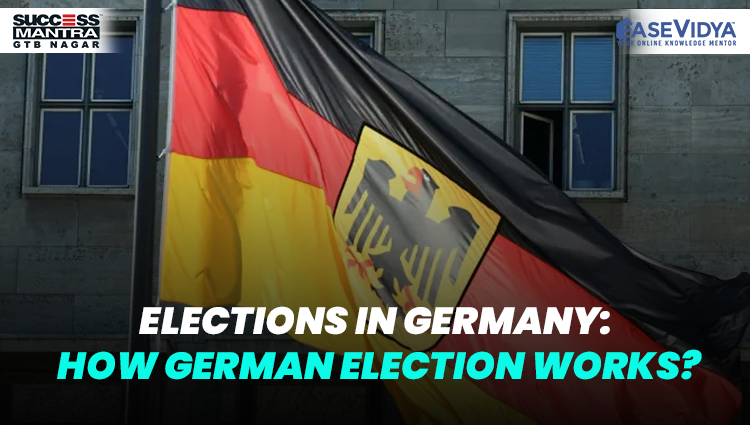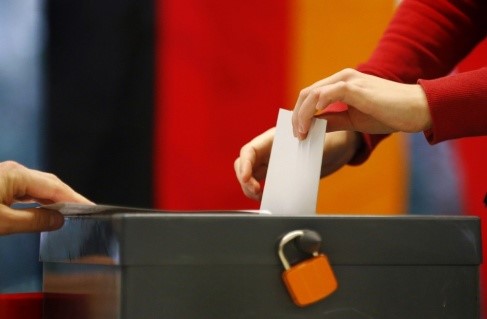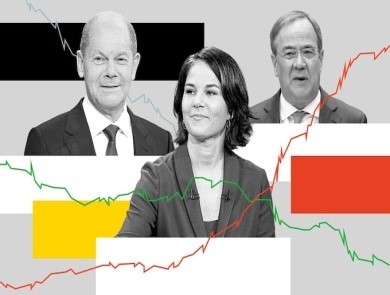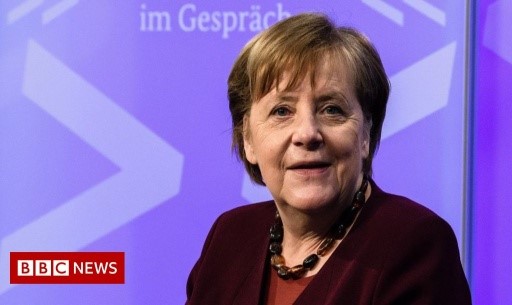
ELECTIONS IN GERMANY: HOW GERMAN ELECTION WORKS?
ELECTIONS IN GERMANY: HOW GERMAN ELECTION WORKS?

German election results 2021 on September 26 will determine who will succeed Chancellor Angela Merkel after being in power for 16 years. Merkel will not be running in the 2021 German Elections. In the most open race in decades for the lower house of parliament known as Bundestag, the three leading parties are: the Centre-right Christian Democrats, the Centre-left Social Democrats, and the Greens. Out of 83 million citizens, approximately 60.4 million German citizens aged 18 and above will be eligible to vote. Approximately 2.8 million German citizens will vote for the first time in life.
Current Affairs Notes By Success Mantra Coaching Institute GTB Nagar Delhi CLICK HERE
HOW DOES THE GERMAN ELECTION WORK?
The 2021 German Elections on September 26, 2021, will elect the members of the 20th Bundestag, the lower house of parliament for a 4-year-term. Then the Chancellor will be elected. Germany applies the mixed-member proportional representation system which uses a system of proportional representation combined with elements of first-past-the-post voting. These seats are distributed between the 16 German states in proportion to the number of eligible voters in the State. Each voter gets two votes per ballot: the first vote is a constituency vote and the second vote is a party-list vote. The first vote decides in the election of 299 members in single-member constituencies by first-past-the-post voting. The second votes help in allocating a proportional number of seats for parties, first in the states and then in the Bundestag. These seats are allocated using the Sainte-Lague method. If a party wins fewer constituency votes (first votes share) in a state than it is entitled as per its party list vote (second votes share), then it receives additional seats from the relevant state list. If a party wins more constituency votes (first votes share) in a state than it is entitled as per its party list vote (second votes share), it creates a number of overhang seats. In this case, other parties receive compensation seats. That is why, the Bundestag usually has more than 598 members such as the 19th (current) Bundestag had 709 seats, 598 regular seats and 111 overhand (compensation) seats.
HOW MEMBERS’ ARE ELECTED TO BUNDESTAG?

In order for a party to be elected to the Bundestag, it has to win at least 5% of the second votes nationwide or win three single-member constituencies via first votes. This threshold keeps the small parties from entering the Parliament. Currently, the Bundestag represents 6 parties: Chancellor Angela Merkel's center-right CDU and its Bavarian sister party the Christian Social Union (CSU), the center-left Social Democrats (SPD), the Left Party, the Greens, and the far-right Alternative for Germany (AfD).
If Germans don't vote for the chancellor, who does?
The newly-elected Bundestag votes for Germany's chancellor. A chancellor needs to receive an absolute majority, more than half, of the votes in parliament to be elected..That is where coalitions come into play. Because there are several political parties represented in the Bundestag, it's unusual for a chancellor to receive an absolute majority of votes from only his or her party. To secure more than half of the votes, a larger party may team up with smaller parties to form a coalition government. In the 2013 elections, Angela Merkel's Christian Democratic Union (CDU) and its sister party Christian Social Union (CSU) teamed up with the Social Democratic Party (SPD) to form a grand coalition. Once a coalition is formed, members of the Bundestag vote to elect the chancellor.
WHY IS THE SYSTEM SO COMPLICATED?
Many Germans saw the failure of the pre-World War II Weimar Republic as the failure of the country's fragmented parliamentary system. After World War II, the Federal Republic of Germany transferred power from the President toward the Bundestag and encouraged political majorities to pass legislation. Germany's current system emphasizes a strong party discipline between the executive and legislative branches, according to Josef Braml of the German Council on Foreign Relations
WHO ELECTS CHANCELLOR IN GERMANY?

In Germany, the Chancellor is the Head of the Government. The Chancellor is not directly elected, unlike the US Presidential elections. The process to elect the Chancellor in Germany can take up to weeks or months. As per the polls, the negotiations will be complicated this time. No single party is expected to reach a parliamentary majority this time. Therefore, the election results will help to determine what coalition governments could be possible. A detailed coalition agreement will be expected to be produced which will need approval in votes by party congresses or even a ballot. Once the Coalition government is ready, the President of Germany will nominate a candidate for Chancellor to the Bundestag. The candidate does not have to be a member of parliament. The candidate will require a majority of all members to be elected as Chancellor. Until the new government takes charge, the outgoing Chancellor (in this case Chancellor Angela Merkel) will stay on in caretaker capacity. Three parties have fielded candidates to be Chancellor: Armin Laschet for the Centre-right Christian Democrats, Olaf Scholz for the Centre-left Social Democrats, and Annalena Baerbock for the Greens.
PRAVAHINI Current Affairs Notes By Success Mantra Coaching Institute GTB Nagar Delhi CLICK HERE
STRUCTURE OF GERMAN PARLIAMENT
The German parliament has two chambers viz. Federal Diet (Bundestag) & Federal Council ((Bundesrat)
Federal Diet (Bundestag): The Federal Diet (Bundestag) nominally has 598 members who are elected for a 4 year term. 299 members elected in single-seat constituencies according to first-past-the-post, while a further 299 members are allocated from statewide party lists to achieve a proportional distribution in the legislature, conducted according to a system of proportional representation called the Mixed member proportional representation system. In the current parliament there are 16 overhang seats, giving a total of 614.
Federal Council: The Federal Council (Bundesrat) has 69 members representing the governments of the states
ELECTION SYSTEM IN INDIA
India has a parliamentary system as defined by its constitution, with power distributed between the central government and the states. The President of India is the ceremonial head of the country and supreme commander-in-chief for all defence forces in India. He works on the aid and advice of the council of ministers headed by the Prime Minister. However, it is the Prime Minister of India, who is the leader of the party or political alliance having a majority in the national elections to the Lok Sabha, that exercises most executive powers for matters that require countrywide effection under a federal system. India is regionally divided into States (and Union Territories) and each State has a Chief Minister who is the leader of the party or political alliance that has won a majority in the regional elections otherwise known as State Assembly Elections that exercises executive powers in that State. The respective State's Chief Minister has executive powers within the State and works jointly with the Prime Minister of India or their ministers on matters that require both State and Central attention. Some Union Territories also elect an Assembly and have a territorial government and other (mainly smaller) Union Territories are governed by a person appointed by the President of India.
The President of India monitors the rule of law through their appointed governors in each State and on their recommendation can take over the executive powers from the Chief Minister of the State, temporarily when the elected representatives of the State government has failed to create a peaceful environment and has deteriorated into chaos. The President of India dissolves the existing State government if necessary, and a new election is conducted.
Elections in the Republic of India include elections for:
- Members of the Parliament in Lok Sabha and Rajya Sabha,
- Members of State Legislative Assemblies, (and also Assembly elections to some of the Union Territories like Delhi and Puducherry),
- Members of State Legislative Councils,
- Members in village panchayats or city corporation councils.
- By-election is held when a person of a particular constituent dies, resigns, or is disqualified.












0 Comment